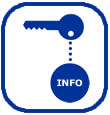 Interviews as Primary Sources
Interviews as Primary Sources
One way to include audio primary sources in your local history project is by creating them yourself through recorded interviews. If local citizens have stories to share, you can involve the community for some engaging personal reflections.
Don’t forget that anyone you interview and record must sign a permission waiver.
Recording and Editing Audio
If possible, use a digital recorder to capture interviews. They are relatively inexpensive, and because the content is already in a digital format, you can move files directly to your computer. This is much simpler than recording on a cassette tape and digitizing it later.
Numerous paid programs are available for editing audio, but the free, open source program Audacity can do a number of basic editing tasks. Check the Audacity tutorials for help getting started.
Sharing Audio
Two popular file formats for sharing digital audio files are MP3 and WAV. MP3 files are smaller than WAV files, so this is generally the best choice for sharing files online. This is especially true if not everyone in your audience has a high-speed connection. Try to avoid audio files which require your audience to download an additional program (like Real Audio); almost everyone can play MP3 files on their computer without installing any additional software or plug-ins.
